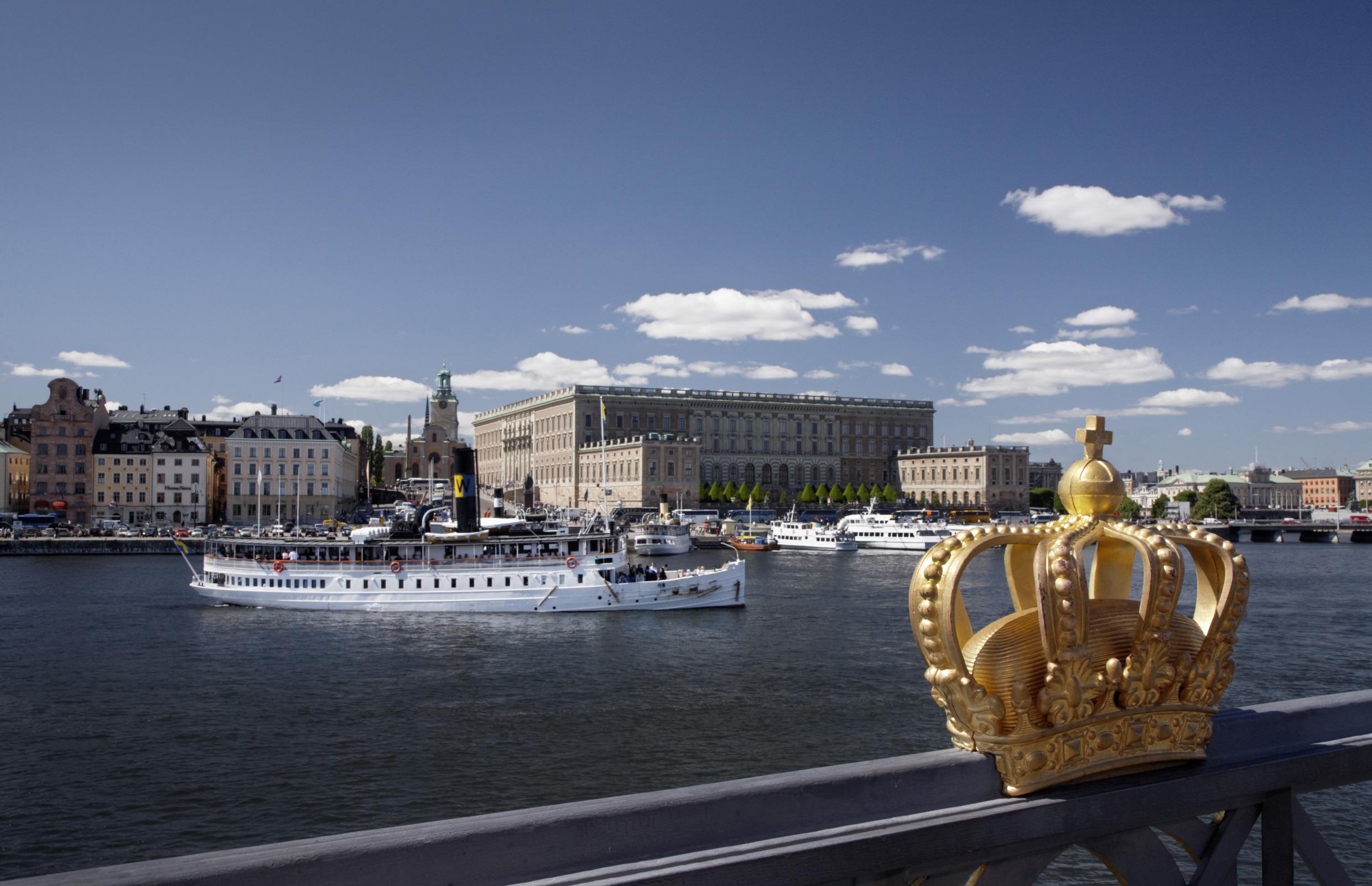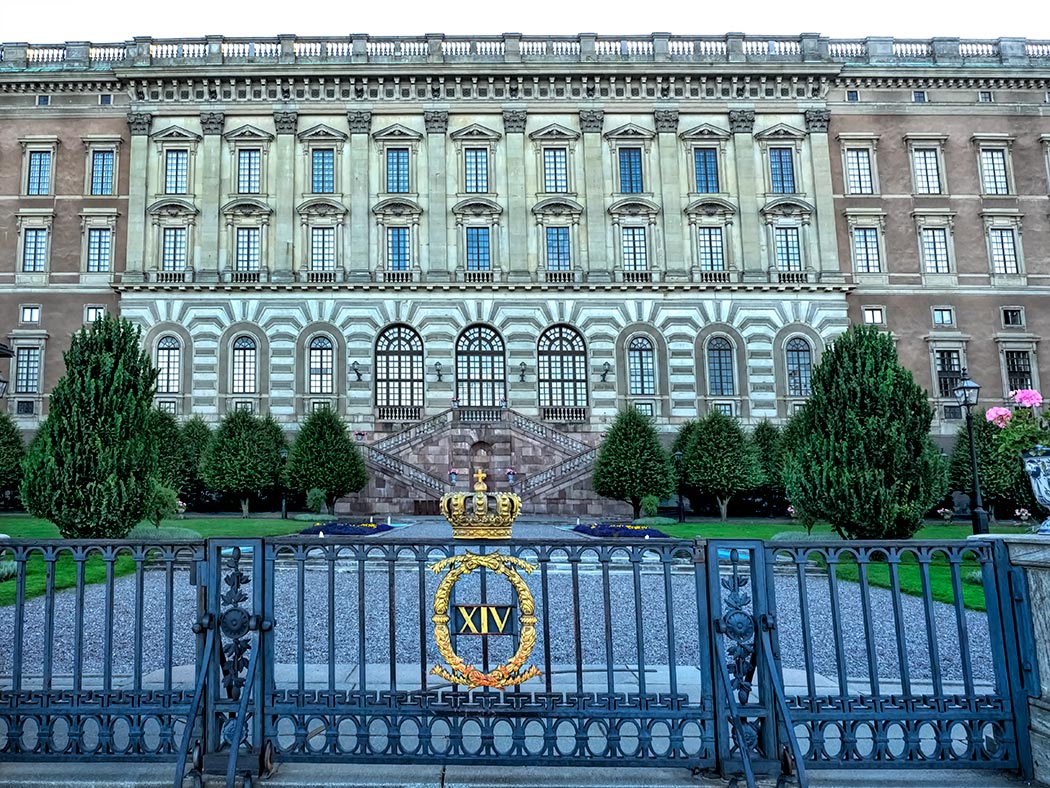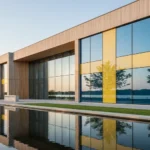“In its grand Baroque design, the Royal Palace in Sweden reflects the strength of the Swedish monarchy during the 18th century, a time when the palace was conceived as both a fortress and a symbol of royal power.” – Nils L. Andersson (Historian and Scholar of Swedish Architecture)
Standing proudly in the heart of Stockholm, The Royal Palace is one of the largest palaces in Europe. This magnificent structure is not only a residence for the Swedish Royal Family but also a symbol of the nation’s history and culture.
The palace, with over 600 rooms, is open to the public and houses several museums. Visitors can explore grand halls, royal apartments, and historical artifacts that tell stories of Sweden’s past. Whether you are a history buff or just curious, The Royal Palace promises an unforgettable experience. Let’s delve into what makes this royal residence so fascinating.

Historical Background
The Royal Palace in Stockholm, Sweden, stands as a magnificent symbol of the country’s rich history. This grand structure has witnessed centuries of royal events, political decisions, and cultural transformations. Understanding its historical background offers a glimpse into the architectural and cultural heritage of Sweden.
Early Construction
The Royal Palace’s origins date back to the 13th century. The original fortress, known as Tre Kronor (Three Crowns), was built to protect Stockholm. Over the years, the fortress evolved into a Renaissance palace. The transformation was driven by the need for a more representative royal residence.
In 1697, a devastating fire destroyed most of Tre Kronor. This tragic event marked the end of the old fortress. Following the fire, architect Nicodemus Tessin the Younger was commissioned to design a new palace. Construction began in 1697 and continued for over 60 years.
The new palace was built in the Baroque style. Tessin’s design aimed to create a grand and imposing structure. The palace was finally completed in 1760, becoming a symbol of Swedish power and culture.
Key Events
Throughout its history, the Royal Palace has been the site of many significant events. In 1754, King Adolf Frederick and Queen Louisa Ulrika moved into the completed palace. This marked the beginning of its role as the official royal residence.
During the 19th century, the palace witnessed several important moments. In 1810, the adoption of Jean Baptiste Bernadotte as Crown Prince took place here. This event established the Bernadotte dynasty, which continues to rule Sweden today.
In the 20th century, the palace played a role in Sweden’s transition to a constitutional monarchy. The palace hosted numerous state events, including royal weddings and official visits by foreign dignitaries.
| Year | Event |
|---|---|
| 1697 | Fire destroys Tre Kronor |
| 1754 | King Adolf Frederick moves in |
| 1810 | Bernadotte adoption |
Today, the Royal Palace remains a significant cultural and historical landmark. It serves as the official residence of the Swedish monarchy and a popular tourist attraction.
Architectural Style
The Royal Palace in Stockholm stands as a testament to Sweden’s rich history. Its architecture draws visitors from around the world. The palace’s style is both grand and intricate. It reflects a blend of influences and distinct features.
Influences
The Royal Palace’s design shows heavy Baroque influences. Nicodemus Tessin the Younger, the architect, aimed for grandeur. He wanted to create a majestic and timeless structure. Italian and French architectural trends shaped his vision. These influences are evident in the palace’s symmetrical layout. The use of classical columns and grand staircases also highlight Baroque elements.
Distinct Features
The palace boasts a striking façade. It features intricate stonework and elegant details. The roofline is adorned with statues of ancient gods. This adds to its regal appearance. The interior is equally impressive. Lavish rooms with ornate ceilings and grand halls captivate the eye. The Hall of State is a prime example. Its golden wall decorations and plush furnishings exude opulence. The palace also houses the Tre Kronor Museum. This museum showcases artifacts from the original medieval castle. Each room tells a story of Sweden’s royal heritage.
Interior Design
The Royal Palace in Stockholm is a treasure trove of exquisite interior design. Each room offers a glimpse into the majestic past of Sweden’s royalty. Let’s explore some of the most remarkable areas inside the palace.
State Apartments
The State Apartments are a true marvel. They showcase the grandeur of Swedish history. The rooms are adorned with elegant chandeliers, intricate tapestries, and antique furniture. Each piece tells a story of its own.
Visitors can see:
- Luxurious ballrooms where royal events were held
- Historical portraits of past monarchs
- Ornate ceilings with detailed frescoes
Royal Chapel
The Royal Chapel is a masterpiece of baroque architecture. It is a place of both worship and beauty. The chapel features soaring ceilings and stunning stained glass windows.
Key features include:
- Altar with gold details
- Beautiful organ pipes
- Elaborate woodwork and carvings
The chapel’s serene atmosphere invites reflection and awe.

Art Collections
The Royal Palace in Stockholm, Sweden, is home to some of the most magnificent art collections. Visitors can explore a variety of stunning artworks and historical pieces. The collections reflect centuries of Swedish history and culture.
Royal Art Gallery
The Royal Art Gallery houses an impressive array of paintings and sculptures. The gallery showcases works from the 16th century to the present day. It includes masterpieces by renowned artists such as:
- Rembrandt
- Rubens
- Canaletto
Each piece tells a unique story. The gallery also features portraits of Swedish royalty. These portraits offer a glimpse into the lives of past monarchs. The gallery is a must-see for art enthusiasts.
National Treasures
The National Treasures section is another highlight of the Royal Palace. This collection includes items of great historical significance. Visitors can find crowns, jewels, and other regalia used in royal ceremonies. The collection also features:
- Ancient manuscripts
- Historical documents
- Medieval artifacts
These treasures provide insight into Sweden’s rich cultural heritage. The detailed craftsmanship of each item is truly remarkable. Exploring this section is like stepping back in time.
Gardens And Grounds
The Royal Palace in Stockholm, Sweden, is not only known for its grand architecture but also for its beautiful gardens and grounds. These serene spaces offer visitors a chance to relax and enjoy nature. The gardens are a perfect blend of history and natural beauty, making them a must-see.
Baroque Garden
The Baroque Garden is a highlight of the Royal Palace grounds. This garden features symmetrical designs and neatly trimmed hedges. Visitors can stroll along the pathways and admire the intricate patterns. The Baroque style emphasizes order and beauty, creating a peaceful atmosphere.
Fountains And Statues
The gardens are adorned with stunning fountains and statues. The fountains provide a soothing sound of flowing water. The statues, crafted with great detail, add a touch of elegance. These features create focal points and invite guests to pause and take in the beauty.

Cultural Significance
The Royal Palace in Stockholm is more than just a stunning building. It plays a key role in Sweden’s culture and history. This magnificent structure is a symbol of the Swedish monarchy. It is a place where tradition and modernity meet. The palace is alive with events that showcase the country’s rich heritage.
Royal Ceremonies
The Royal Palace hosts many royal ceremonies each year. These events celebrate important moments in the life of the royal family. The changing of the guard is a popular ceremony. It happens daily and attracts many visitors. During this event, soldiers in traditional uniforms march and perform. It is a sight to behold and a nod to history.
Another key ceremony is the King’s official birthday. This grand event includes parades, music, and speeches. The palace grounds fill with people celebrating the monarch. Royal weddings are also held here. These weddings draw attention from around the world. They are filled with pomp and splendor. Each ceremony is a blend of past and present, showing the royal family’s ongoing role in society.
Public Events
The Royal Palace is not just for the royal family. It opens its doors for many public events too. These events allow people to experience the palace’s beauty and history firsthand. One popular event is the National Day celebration. On this day, the palace offers free entry. Visitors can explore the state rooms and enjoy special exhibitions.
During the summer, the palace hosts concerts in its beautiful courtyards. These concerts feature a variety of music genres. They create a festive atmosphere that welcomes all. The palace also organizes guided tours. These tours provide insights into the palace’s history and architecture. Special exhibitions are held throughout the year. They showcase art, historical artifacts, and more.
The Royal Palace is a living museum. It connects the past with the present. It is a place where culture is celebrated and shared. Its cultural significance is evident in every ceremony and public event held within its walls.
Visitor Information
Visiting The Royal Palace in Stockholm is a must for history lovers. This grand palace offers a glimpse into Sweden’s royal heritage. Before you go, here’s some essential visitor information to make your trip smooth and enjoyable.
Tour Options
The Royal Palace offers several tour options. Guided tours are available in English. These tours provide deep insights into the palace’s history. Self-guided tours are also an option. Audio guides can be rented at the entrance. These guides are available in multiple languages. Check the palace’s official website for tour schedules and prices.
Accessibility
The Royal Palace aims to be accessible to all visitors. There are ramps and elevators for wheelchair access. Accessible restrooms are available within the palace. Service animals are allowed inside the palace. Visitors with disabilities may be eligible for discounted tickets. For detailed accessibility information, visit the palace’s official website.
Preservation Efforts
The Royal Palace in Stockholm, Sweden, stands as a testament to the country’s rich history and culture. Preserving this majestic structure is a significant task. Continuous efforts ensure it remains an iconic landmark for future generations. The palace’s preservation involves meticulous planning and execution.
Restoration Projects
Over the years, several restoration projects have been undertaken to maintain the palace’s grandeur. These projects focus on repairing and refurbishing different parts of the palace.
For example, the facades and roofs have undergone extensive restoration to prevent damage from weather elements. The interiors, including the grand halls and royal apartments, have also been carefully preserved. Skilled artisans work to restore intricate details in the decor and furnishings.
Restoration projects ensure the palace retains its historical authenticity. The use of traditional materials and techniques is crucial. This approach maintains the original charm of the palace.
Future Plans
Future plans for the Royal Palace aim to enhance its preservation efforts. These plans include modernizing infrastructure while respecting the palace’s historical integrity.
- Improving energy efficiency
- Upgrading security systems
- Enhancing visitor facilities
Efforts are also in place to digitize the palace’s extensive archives. This initiative will make historical documents accessible to researchers and the public.
Education and outreach programs are planned to engage the community. These programs will highlight the importance of preservation and the palace’s historical significance.
Continuous investment and careful planning will ensure the Royal Palace remains a symbol of Sweden’s heritage.
Frequently Asked Questions
What Is The Royal Palace In Stockholm?
The Royal Palace in Stockholm is the official residence of the Swedish monarch. It is located in the Old Town.
How Old Is The Royal Palace In Stockholm?
The Royal Palace in Stockholm dates back to the 18th century. It was completed in 1760.
Can You Visit The Royal Palace In Stockholm?
Yes, the Royal Palace in Stockholm is open to visitors. You can explore its various museums and attractions.
What Can You See Inside The Royal Palace?
Inside the Royal Palace, you can see the Royal Apartments, the Treasury, and the Armory. There are also several museums.
Conclusion
The Royal Palace in Stockholm offers a glimpse into Sweden’s rich history. Its stunning architecture and vibrant culture captivate all visitors. Each room tells a unique story, adding to its charm. A visit to the palace is a journey through time.
Don’t miss the chance to explore this historic treasure. It promises unforgettable memories and a deeper appreciation of Sweden’s heritage. Plan your trip today and experience the beauty of the Royal Palace.






